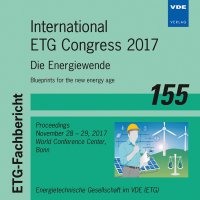Energy intensive industry as the backbone for demand side flexibility
Konferenz: International ETG Congress 2017 - International ETG Congress 2017
28.11.2017 - 29.11.2017 in Bonn, Deutschland
Tagungsband: International ETG Congress 2017
Seiten: 6Sprache: EnglischTyp: PDF
Persönliche VDE-Mitglieder erhalten auf diesen Artikel 10% Rabatt
Autoren:
Pelzer, Alexander; Richter, Marc; Lombardi, Pio A.; Komarnicki, Przemyslaw (Fraunhofer Institute for Factory Operation and Automation IFF, Magdeburg, Germany)
Inhalt:
The European Union has fixed the target to cover 55 % of the electricity consumption by renewable energy sources (RES) in the “Energy Roadmap 2050”. Germany even aims to cover 80 % of the electric load by RES by the same target year. The costs for the integration of RES into the German electricity network were estimated to be higher than 1 billion Euro in 2015. More than 15,000 hours of redispatch activities were registered. Not only the integration of new components, such as RES or storage systems, is essential to reach the ambitious targets, but also new services and system functionalities, such as flexibility options, must be developed. Energy-intensive industries provide high flexibility potentials. They can offer both positive and negative power flexibility and, thereby, contribute strongly to the stability of the German power system. Since most industrial processes depend on different energy carriers, for example, electricity, heat, steam, compressed air or hydrogen, such industrial infrastructures can be referred to as multi-energy systems. The optimal coordination of all these energy carriers, including their operating equipment (e.g. converters and storage systems), might enable the industry operators to develop new business models. The analysis of new flexibility options which are offered by the energy-intensive industries to the system operator and the evaluation of their potential are the aims of this study.


